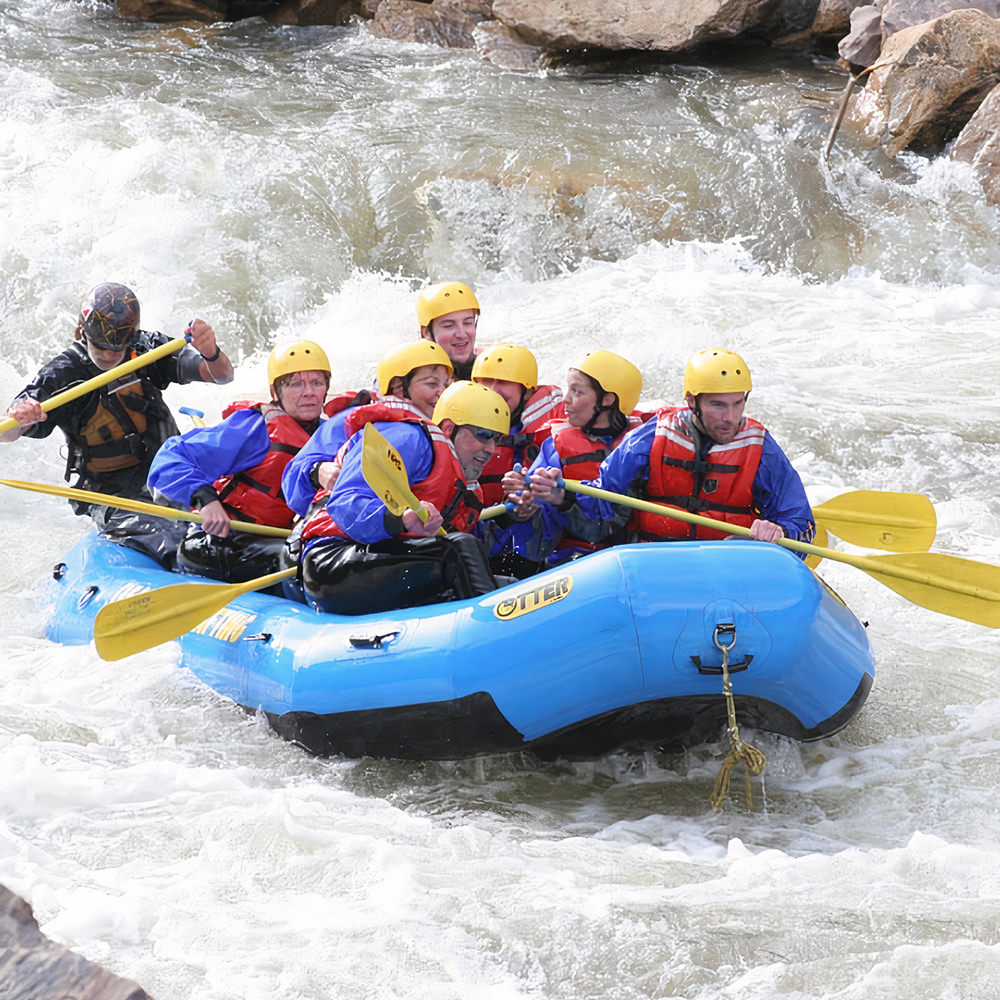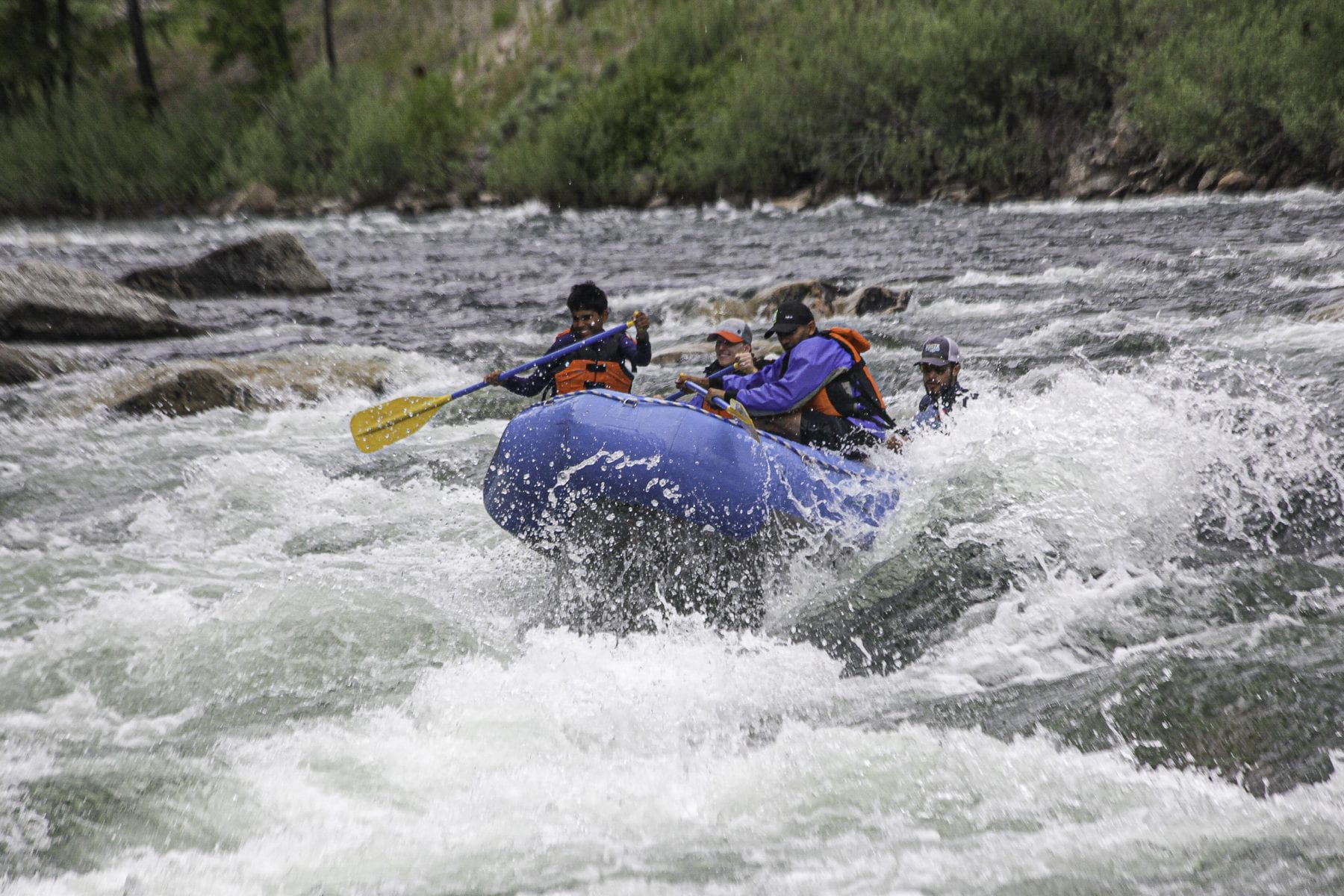White Water Rafting Colorado: A Must-Do Journey!
White Water Rafting Colorado: A Must-Do Journey!
Blog Article
Important Skills for Water Rafting
Understanding the art of water rafting requires a mix of accurate abilities and knowledge to navigate the unforeseeable currents of rivers, making it a thrilling yet potentially dangerous task. As lovers prepare to embark on their next adventure, it is vital to outfit oneself with crucial competencies that surpass just paddling. From comprehending the complexities of river dynamics to swiftwater rescue techniques and smooth team communication, the journey down the river demands a blend of know-how and versatility. With safety methods acting as a keystone, individuals are confronted with a complex challenge that necessitates a careful approach and undeviating emphasis.
Paddling Methods
Mastering reliable paddling strategies is critical for navigating water plethoras securely and efficiently. Correct paddling not just propels the raft ahead but likewise assists in maneuvering and guiding through varying water problems. One fundamental method is the forward stroke, where paddlers dip the blade fully into the water and pull it back together with the raft to create propulsion. Timing and control are crucial to make certain that all paddlers remain in sync, making best use of the power of each stroke.
Apart from the forward stroke, the draw stroke is necessary for making fast adjustments or drawing the raft better to an object. By placing the paddle blade vertical to the water's surface area and drawing the water towards the boating, paddlers can effectively alter the vessel's instructions. In addition, the backstroke offers as a valuable device for supporting or reducing down the raft when needed.
River Checking Out
Efficient paddling methods, such as the forward stroke and draw stroke, play an essential function in browsing and translating river currents, an ability recognized as river reading. River analysis includes the ability to analyze the rate, deepness, and instructions of the water circulation to make educated choices while browsing rapids. By understanding just how the water moves obstacles and with various networks, rafters can pick the ideal route to securely pass through the river.
Eddies, for instance, are locations where the water moves in a circular activity, often giving chances for rest or strategic maneuvers. Hydraulics, typically understood as "openings," are areas where water recirculates back upstream, posing possible dangers to rafts.
Mastering the ability of river reading is necessary for safe and pleasurable rafting experiences, enabling paddlers to navigate difficult waters with self-confidence and precision.

Swiftwater Rescue
Understanding swiftwater rescue methods is essential for water rafting fanatics to react efficiently in emergency situation circumstances on fast-flowing rivers. Swiftwater rescue entails a collection of specialized skills and knowledge focused on safely drawing out individuals from swift-moving water. One vital facet of swiftwater rescue is identifying the threats existing in fast-flowing rivers, such as filters, undercut rocks, and strong currents, to intend and execute successful rescue procedures.
Proper equipment is crucial for swiftwater rescue, including throw bags, rescue ropes, headgears, and individual flotation protection gadgets. Rafting fanatics must be proficient at using this equipment in high-stress scenarios to make certain the safety and security of themselves and others. Furthermore, swiftwater rescue methods usually involve teamwork and sychronisation amongst rafters to execute intricate rescue maneuvers effectively.
Learning swiftwater rescue is extremely recommended for individuals engaging in water rafting activities, as it outfits them with the essential skills to handle emergency situations promptly and efficiently. White Water Rafting Colorado. By comprehending and exercising swiftwater rescue strategies, water rafting lovers can boost their security which of their fellow rafters on tough river explorations
Group Communication
Effective synergy in water rafting relies heavily on smooth communication among employee to make sure collaborated and risk-free navigation through challenging river problems. Clear and concise interaction is critical for the success of any kind of rafting expedition. Staff member have to be able to effectively communicate essential info such as paddling commands, warning signals, and navigational instructions.
In the often unpredictable and hectic setting of river rafting, punctual and exact interaction can mean the distinction between a potential disaster and an effective run - White Water Rafting Colorado. Each staff member plays a vital role in the general communication procedure, whether it be listening attentively to the guide's directions, communicating info to other paddlers, or signaling for assistance when needed
Establishing a common language and interaction system prior to hitting the water is important. This makes certain that everyone is on the very same page and comprehends how to connect effectively throughout the rafting trip. By fostering a culture of Your Domain Name open interaction and shared respect, rafting groups can improve their efficiency and safety and security on the river.

Security Protocols
In the context of water rafting, the structure of team communication established during expeditions is additional reinforced via rigorous adherence to safety and security protocols. Safety protocols are paramount in making sure the well-being of both rafters and guides during water rafting adventures. One vital safety procedure is the correct wearing of individual flotation tools (PFDs) by every person on the plethora. PFDs are essential in emergency situations to maintain participants afloat and supply buoyancy. Furthermore, rafters must be skilled in swiftwater rescue strategies and protocols in situation of somebody falling too far or if the boating tips over.
One more Look At This trick safety and security protocol is the comprehensive briefing offered by guides before starting a rafting journey. This briefing generally includes info on paddling techniques, what to do in instance of numerous emergencies, and signals made use of for interaction throughout the trip. It is important to have designated safety kayakers accompanying the team to give immediate aid if required. By purely sticking to these safety protocols, water rafting adventures can be both exhilarating and safe for all participants entailed.
Conclusion
In final thought, grasping important skills for water rafting is important for a secure and delightful experience on the river. Paddling techniques, river reading, swiftwater rescue, team communication, and safety and security methods are all necessary parts that add to an effective rafting journey. By refining these skills, rafters can navigate challenging waters with self-confidence and ensure the safety of themselves and their staff member.
Understanding the art of water rafting needs a combination of accurate abilities and understanding to browse the unforeseeable currents of rivers, making it a thrilling yet potentially dangerous task. By positioning the paddle blade vertical to the water's surface area and pulling the water in the direction of the raft, paddlers can successfully change the vessel's instructions.Comprehending swiftwater rescue strategies is crucial for water rafting discover this fanatics to react effectively in emergency circumstances on fast-flowing rivers.Reliable team effort in water rafting counts heavily on seamless communication among team members to make sure collaborated and secure navigating via tough river conditions.In conclusion, mastering important abilities for water rafting is important for a risk-free and pleasurable experience on the river.
Report this page